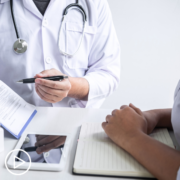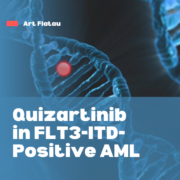Novel AML Therapy Use | Impact of Socioeconomic Status and Other Factors
Novel AML Therapy Use | Impact of Socioeconomic Status and Other Factors from Patient Empowerment Network on Vimeo.
How do socioeconomic status and other factors impact novel acute myeloid leukemia (AML) therapy use? Expert Dr. Andrew Hantel from Dana-Farber Cancer Institute and Harvard Medical School discusses major factors that impact novel AML therapy use, solutions to decrease the disparities in novel therapy use, and support resources for patients.
[ACT]IVATION TIP
“…for patients who are newly diagnosed and considering different treatment options that may be available to them to say working with both your clinical team and looking outside the clinical team to other well-known support services like Leukemia & Lymphoma Society to see if there are additional financial and other resources that can be obtained in order for you to be able to avail yourself of any treatment option that’s available, would be very helpful.”
Download Resource Guide | Descargar guía de recursos
Related Resources:
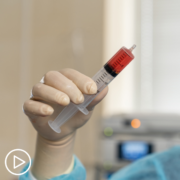
How Bone Marrow Biopsies Impact Acute Myeloid Leukemia Treatment and Care |
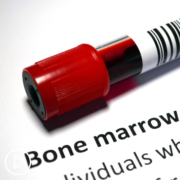
Do AML Bone Marrow Biopsies Show Racial and Ethnic Variances? |
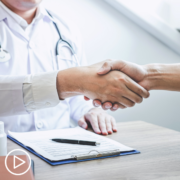
|
Transcript:
Lisa Hatfield:
Dr. Hantel, in your study focusing on sociodemographic associations with uptake of novel therapies for AML, can you describe those findings and what they might mean for patients from diverse backgrounds, particularly those with lower socioeconomic status?
Dr. Andrew Hantel:
So in our study of sociodemographic associations with the uptake of novel therapies for AML, we found that patients from diverse backgrounds, particularly those with lower socioeconomic status and those who identified as Black, Asian, or other in this case, non-Hispanic minoritized groups actually face disparities in accessing some of the new treatments that we have for AML. And we know that there are a number of new treatments for this disease, but that many of these treatments are more expensive and are given as outpatients.
And in these cases, this can be great, because it allows people to not have to remain in the hospital like some of our old therapies, but also means that really this is putting more of the like logistical burden on families and on patients. Meaning you have somebody who’s potentially more sick at home rather than in the hospital where there’s nursing and a lot of other caregivers that isn’t on the caregiver at home.
And then we also have the increased burden of actually bringing the person back and forth to the hospital, taking more time off work, and all of the money also that’s involved in that. And so this can translate into some disparities by socioeconomic status, which means that people with less means are less likely to get these medications. And these same groups are also less likely to be seen in practices where these newer drugs are likely to get prescribed.
And so together, some of the study findings that we saw were more that these drugs were being less taken up by people with those backgrounds and by practices that see those patients. And in the end, we know that these novel therapies are being approved, because they offer something new, either that’s better or that expands the treatments to newer groups who are unlikely to have as great options before.
And so we want to really provide these treatments to everybody who’s eligible for them. And we shouldn’t think that that eligibility requires really different amounts of money, or different types of personal characteristics could be equitably available to everybody.
And addressing these disparities kind of involves a very complex set of considerations, such as making sure that patients who are stable enough to do so they can go see AML specialists and consider more of these novel therapies that all patients are educated about, their treatment options and the logistics of different treatment choices and that they’re provided with all the avenues of support available to them.
Some of these can be through societies like The Leukemia & Lymphoma Society, which can connect patients with a variety of support services, including more informational services as well as direct financial support to be able to either obtain these drugs or work with companies and other places to figure out how to maintain or how to obtain these drugs.
So my activation tip for this question would be for patients who are newly diagnosed and considering different treatment options that may be available to them to say working with both your clinical team and looking outside the clinical team to other well-known support services like Leukemia & Lymphoma Society to see if there are additional financial and other resources that can be obtained in order for you to be able to avail yourself of any treatment option that’s available, would be very helpful.

